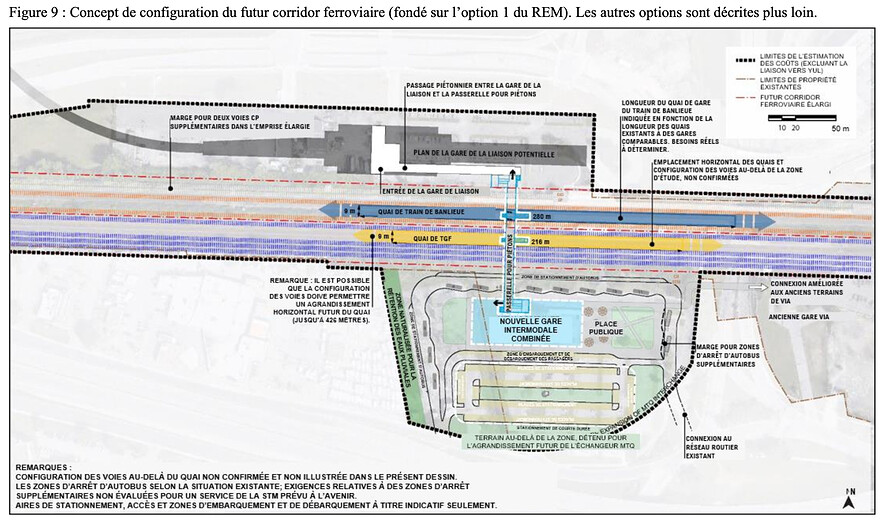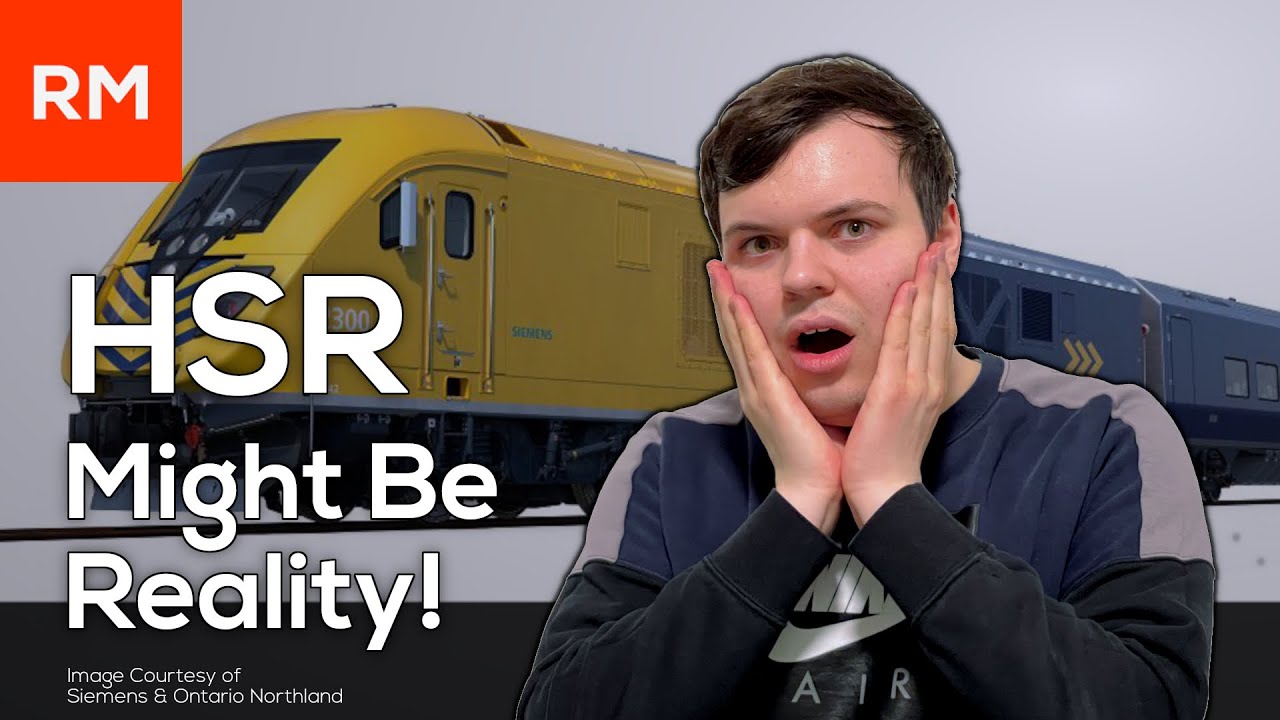Did my internship at MMC. Definitely some good news for those working there, I’m just wondering how this’ll play in with a privatized corridor?
Lol the header pic makes me want to cry: a modern intercity train riding squiggly tracks atop rotting timber ties.
If its anything like we had 350 meters from where I live before they finally reworked the track, it is much worse than that. The list of problems was rather long. Even somebody with minimal expertise could see that there was a major problem. Contaminated ballast, floating track, cracked rail head, nails sticking out high enough to hit the train wheels, missing nails, missing alignment plates, broken rail connector plate… Mind you, I found all of those problems on a few hundred meters of track. They finally went to work after Mégantic, but not before a few wagons jumped the track right in Sherbrooke’s city center. Something tells me that out there, in the wild, far from prying eyes, there are a lot more of those problems to be found.
Le gouvernement fédéral a décidé de créer cette année VIA TGF, une filiale de VIA Rail, pour veiller à l’exécution du projet.
Il a indiqué que le train à grande fréquence, qui sera en grande partie électrifié, sauf dans les centres urbains en raison des infrastructures existantes, aura son propre corridor de voies neuves et réservées qui s’étendront sur quelque 1000 kilomètres.
![]()
Feds: “Hi CN/CP, we’d like to run fully electric passenger trains on your part of the corridor, because we need it too as a part of our big project, we’ll split the costs and get you started on your own electrification journey!”
CN/CP: “No”
Feds: “Hi CN/CP! As a part of Canada’s goal to reduce emissions, Canada will legislate mandatory electrification on railroads in the entirety population centres by 2035!”
CN/CP: “I’m glad you’re happy to partner with us to electrify our parts of the corridor! Look at how hard we’re working to reduce our own emissions!”
VIA’s Corridor is now electrified.
The feds do seriously need to legislate, at a bare minimum, to deny CN and CP the ability to say no to electrification projects that are in the public interest. Unfortunately, I don’t see that happening. CN and CP have way too much lobbying power in Canada. By volume and by weight, they move a very large portion of the natural ressources that we produce. They can grind the economy to a halt if they want.
Yup, the federal government is too afraid to pull certain levers because lobbying and potential cost. The CDPQ and Metrolink are able to get some deals done with the railroads, what’s the problem here?
If nationalization or regulation are strictly off the table, CN and CP won’t do anything until it’s in their short term financial interest. No CEO will electrify because it’s a huge investment that won’t reflect in the share price for a long time and given that they get paid in options, they will always favor investments with short ROIs.
Les figures 9 et 10 de l’étude du lien entre l’aéroport et le pôle Dorval, préparées avec l’input du CN, semblent au moins laisser présager des voies dédiées au TGF le long de l’A-20 (mais pas partagées avec EXO…misère). En souhaitant que ces voies puissent au moins être électrifiées!
exo doesn’t really need the new right of way in the uninhabited A20 corridor to Centrale, because any improvement and electrification would be more viable as part of a de facto surface metro project along the existing A20 and Westmount subdivision alignments.
I honestly dream of four- or six-car EMUs running both ways, all day, from LL to SAdB. Combined with similar electrified units to and from SJ and Candiac (and possible points beyond), the frequencies between Montreal West and LL would be comparable to a metro, and a complete game changer for this city.
It’s weird to see all those agencies (Via, ARTM, exo, STM, RTL, etc.) seething at CDPQ and their way of doing things, but yet they themselves can’t seem to work together and pool their ressources to improve services.
Government agencies don’t have access to the same amount of capital that CDPQi has.
There’s just too many cooks in the kitchen when it comes to infrastructure and way, way too much red tape.
Give one crown-corporation the power to develop the heavy infrastructure on behalf of each of the other agencies, and they pay them back through user fees. The entity should be self sufficient in the sense that the fees they charge should cover the cost of operation and future investment. So if the STM wants a new metro line, this entity funds and organizes the construction of said line if and only if it determines that there will be a possibility to recoup the investment through user fees based on projected ridership (from STM under the existing funding structure) or can serve as a bank to fund certain smaller improvements. The STM can take or leave the proposal based on it’s cost per pass-km by comparing it to their existing costs or not take the loan due to it not necessarily increasing efficiencies enough to justify costs. They also don’t owe anything to the transit worker’s unions who have an incentive to block any automated as it could threaten jobs. The thing is, this is basically the CDPQi. The only difference is that the 8% ROI is just funneled back into the pot for transit rather than a pension fund. Plus, you’d need a bunch of seed capital and it assumes infrastructure is already in decent shape, which it is not.
At work (for context, R&D), we have one team that designs, purchases, implements, and maintains all the equipment we use in R&D. The one team deals with all the suppliers, does a single CapEx plan and best organizes them based on on actual net benefit to the rest of us. They’re limited in how much they can spend in a given year so they make cuts where appropriate, and suggest alternatives when they fit better into the company’s existing infrastructure plan. We should strive to mimic this as much as possible.
Its always about making sure that people’s incentives make sense for the job at hand. The government’s incentive is to get votes, not to do what is good for efficient transit. A Metro to Lanaudière is good for politics, but not really efficient. Spending a few hundred million to give buses the ability to control stop lights isn’t great and flashy for politics, but is great for efficient transit. This entity only has the incentive to develop efficient infrastructure that generates ridership which in turn brings in revenue. That’s it… If any level of government wants changes to the project, they need front the cost of the changes as well as finance the upkeep of said improvements in advance.
I’m not sure I really understand this part. Wouldn’t this mean that any public transit projects that involve the bus system or legacy metro system wouldn’t be possible? They almost never “make a profit”. Or by make a profit you mean that they hit a funding efficiency target, like capturing 60% of costs if the government agrees to fund the other 40%. The last thing North America needs is more profitability focused transit infrastructure. Under that model I don’t think areas like Montreal-Nord would ever get transit of any kind because the real estate land value opportunities are less than other areas. These are public services in the end. I’m probably misunderstanding though lol
So the way I see it, the entity would go out and spec out a given project and it would cost say $X and is expected to last 100 years. It is also expected to cost $Y (Present Value) to maintain. The entity then determines how much in $/pass-km recoup that investment plus some ROI that is to be reinvested. One would presume that they would have a similar structure to the REM where if the ridership met certain targets, the cost per additional passenger decreased.
So, as an example with turning the Westmount sub into a light metro. Lets say Exo currently pays $1 per pass-km to operate it now, which is paid for using subsidies and fares. The entity would find out how much it costs to buy the ROW, electrify, get rolling stock, etc. It then evaluates the potential of the line for increased ridership and expects that if built, will get some number of riders greater than before. It will cost the entity $0.75/pass-km over the life of the infrastructure (indexed to inflation) to operate then they add some margin for safety and/or reinvestment. So they might present exo their idea at a cost of $0.90/pass-km. The cost might be more, less or the same, but exo would need to figure it out within their own funding strategy (subsidies included) if it makes sense to move forward. In general, I would expect that the goal is to reduce the per pass-km subsidy by reducing operating costs or by increasing ridership, but if for a project this isn’t possible but the benefit is also quite high, then the government can add additional funds to cover the difference. However if exo wanted it fully tunneled and the cost came to $2 and nobody covered the difference, then the entity wouldn’t move forward with the project as requested by exo.
Real estate isn’t necessarily involved in the plan as it isn’t really a part of the funding model outside of the REM now, but it certainly can be. I’d be curious to see if in areas where the agency is involved in real estate, does there end up being a disparity based on an areas income? In any case, I would expect the number of potential riders being the biggest driver. If it turn out that it does happen, then you can mandate that some portion of the funds must go to serve underserved areas. Id also expect some legislation that auto up zones wherever they go.
The idea to me is to just decouple transit funding from politics as much as possible, create a single project office which gets really efficient at transit project development that is well coordinated amongst all the agencies’ needs.
There’s a couple Park cars and I believe a Château car at CAD railway in the yard. Anyone have any inside knowledge about if its for rehab or for scrap? I know they offload some work from MMC to CAD, but I wasn’t sure of the nature.
EDIT: This I guess? Old news
Ugh. I’m too cynical to even dream of a 300km/h train between the three cities. That would be a huge huge deal.
I’m with ya 100%, but it makes total sense to me that given that they asked for a PPP, HSR is really in the cards. I don’t see any of the bidders mentioned wanting to invest in something that has little differentiation from a bus or a car cost, time or otherwise. It wouldn’t surprise me that the minister didn’t intend to build a 300km/h line, but most of the proposals came up being so.
Montreal-Toronto in 2h30m or less will really be attractive and pull demand from the airlines. Otherwise it will mostly be a white elephant imo.


